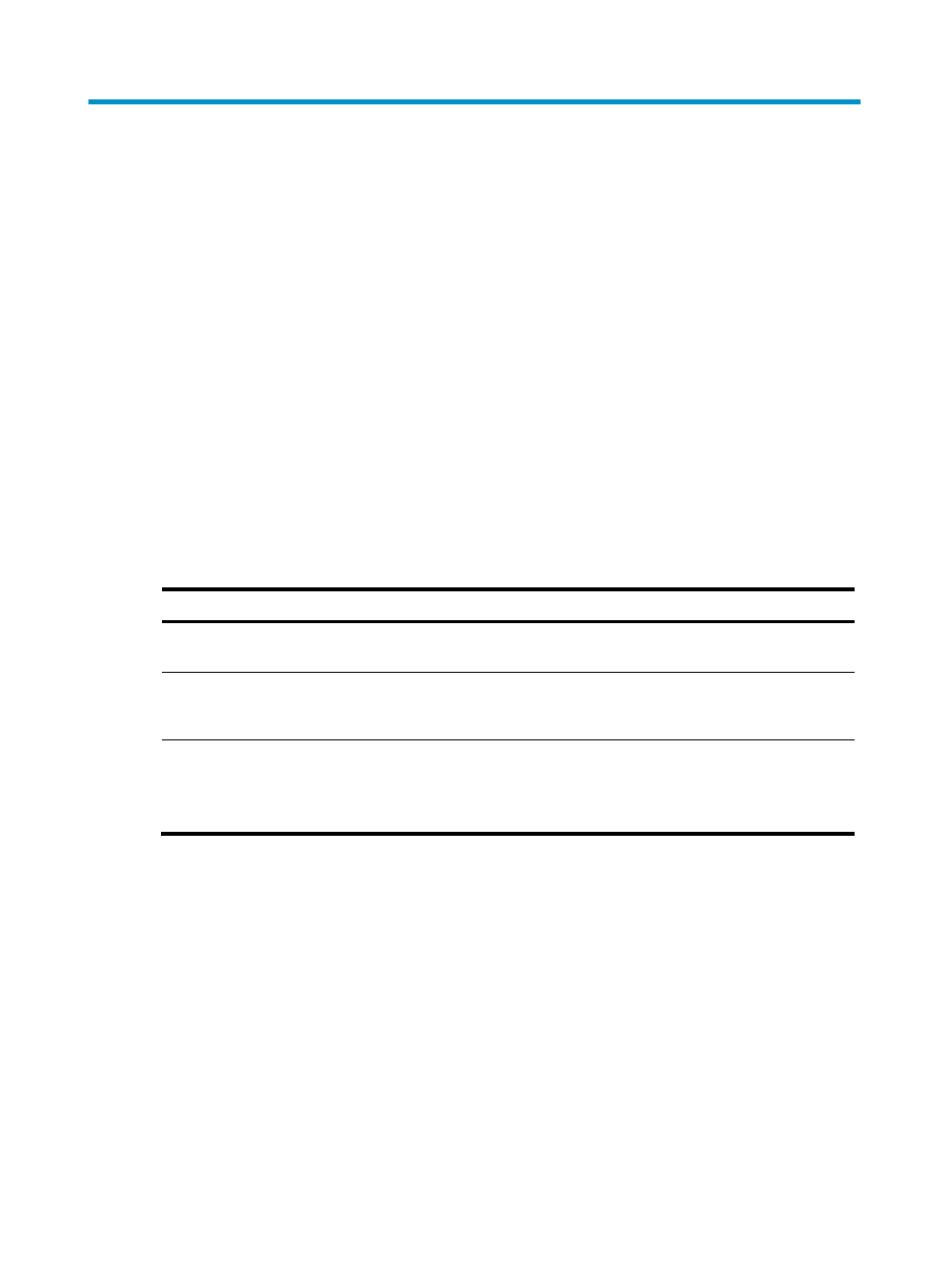Ip routing basics, Routing table – H3C Technologies H3C S12500-X Series Switches User Manual
Page 15

1
0B
IP routing basics
The term "interface" in the routing features collectively refers to Layer 3 interfaces, including VLAN
interfaces and Layer 3 Ethernet interfaces. You can set an Ethernet port as a Layer 3 interface by using
the port link-mode route command (see Layer 2—LAN Switching Configuration Guide).
IP routing directs IP packet forwarding on routers based on a routing table. This chapter focuses on
unicast routing protocols. For more information about multicast routing protocols, see IP Multicast
Configuration Guide.
15B
Routing table
A RIB contains the global routing information and related information, including route recursion, route
redistribution, and route extension information. The router selects optimal routes from the routing table
and puts them into the FIB table, and it uses the FIB table to forward packets. For more information about
the FIB table, see Layer 3—IP Services Configuration Guide.
892H
Table 1
categorizes routes by different criteria.
Table 1 Route categories
Criterion Categories
Destination
•
Network route—The destination is a network. The subnet mask is less than 32 bits.
•
Host route—The destination is a host. The subnet mask is 32 bits.
Whether the
destination is directly
connected
•
Direct route—The destination is directly connected.
•
Indirect route—The destination is indirectly connected.
Origin
•
Direct route—A direct route is discovered by the data link protocol on an interface,
and is also called an "interface route."
•
Static route—A static route is manually configured by an administrator.
•
Dynamic route—A dynamic route is dynamically discovered by a routing protocol.
To view brief information about a routing table, use the display ip routing-table command:
Destinations : 19 Routes : 19
Destination/Mask Proto Pre Cost NextHop Interface
0.0.0.0/32 Direct 0 0 127.0.0.1 InLoop0
1.1.1.0/24 Direct 0 0 1.1.1.1 Eth1/1
1.1.1.0/32 Direct 0 0 1.1.1.1 Eth1/1
1.1.1.1/32 Direct 0 0 127.0.0.1 InLoop0
1.1.1.255/32 Direct 0 0 1.1.1.1 Eth1/1
2.2.2.0/24 Static 60 0 12.2.2.2 Eth1/2
80.1.1.0/24 OSPF 10 2 80.1.1.1 Eth1/3
...
